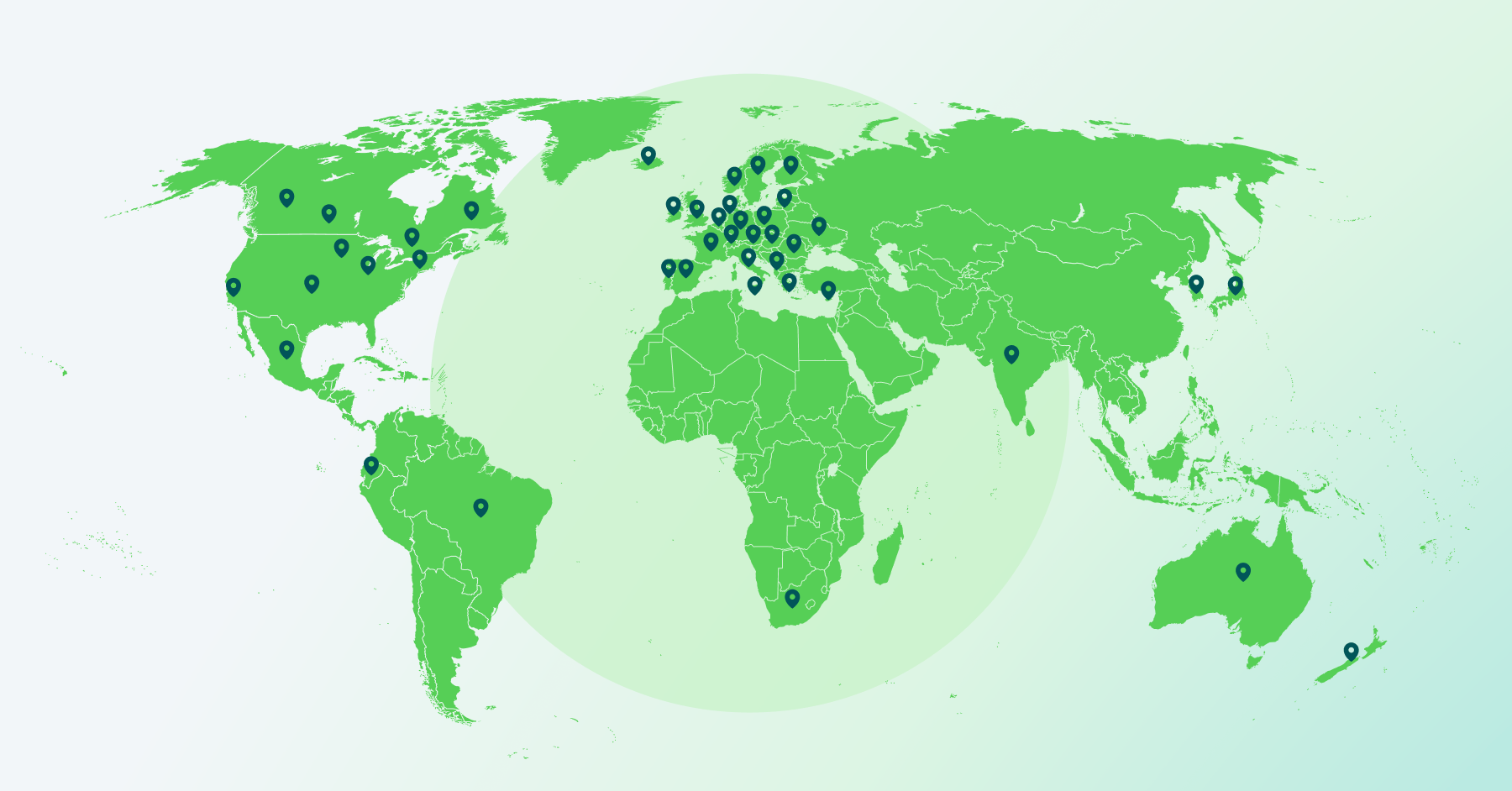This article was originally published on April 22, 2022. It was last updated on June 21, 2022.
A few years ago, I went to my first annual general meeting of shareholders for a public company and was excited to learn that the Reverend Jesse Jackson was in attendance. He took the mic when they opened the meeting for questions, and the first thing he asked the executive committee was whether they publicly disclosed their EEO-1 report.
They didn’t then. But they do now.
Most companies need to submit these reports, and they have the same format for all private companies above a certain size. For this reason, activist groups have been clamoring for years to get companies to disclose these forms publicly — but with little traction, until the murder of George Floyd in 2020. Since then, the trend toward public disclosure of EEO-1 reporting has been picking up speed.
What are EEO-1 reports and who needs to submit them?
Private employers with 100 or more employees, federal contractors and first-tier subcontractors with 50 or more employees, and financial institutions/government depositories with 50 employees or more are required to file. There are some exemptions, which you can find in the 2021 EEO-1 Component 1 Instruction Booklet and in our cheat sheet below.
What to include in the report varies depending on whether your organization is a single-establishment or multi-establishment employer, with four reports required for multi-establishment employers versus one report for single-establishment. All reports must include demographic data for all employees categorized by:
- Race/ethnicity
- Sex
- Job category
2022 filing: The EEO-1 report filing deadline for 2022 was May 17. The system opened on April 12, which meant that the filing period was shorter than previous years and organizations had just over a month to complete their filing. Organizations that did not submit and certify their mandatory 2021 EEO-1 Component 1 Report(s) by Tuesday, May 17, 2022, should have received a notice of failure to file from the EEOC, instructing them to submit and certify their data no later than Tuesday, June 21, 2022. After the June 21 deadline passed, the EEOC would not accept additional 2021 EEO-1 Component 1 Reports, and eligible filers would be out of compliance with their mandatory 2021 EEO-1 Component 1 filing obligation.
While there is no monetary penalty associated with not filing an EEO-1, if an employer refuses or fails to complete an EEO-1 report, the EEOC may seek a court order compelling them to file it. This could potentially lead to the employer being held in contempt.
Federal contractors or subcontractors that need to file an EEO-1 report may pay a higher price: They could be found to be out of compliance with the OFCCP requirements.
It’s also not wise to falsify an EEO-1 report: Any employer that makes a wilfully false statement on an EEO-1 report can face a fine, imprisonment of up to five years, or both.
For more specifics on filing, see our EEO-1 Report Filing Cheat Sheet below.
Filing the report is required by law, but publishing your EEO-1 reporting data is optional. But it is a good way for your organization to show your commitment to your workplace equity and DE&I goals. Here’s why a growing number of companies are disclosing their EEO-1 reports, and why your organization should consider it.
The clamor for transparency is only increasing
Stakeholders want companies to be more transparent about their demographics — from employees and the public to shareholders and institutional investors.
As a result of this pressure, the percentage of the Russell 1000 specifically disclosing EEO-1 data or some other breakdown of intersectional demographic data grew from 4% in September 2020 to nearly 11% in September 2021, according to JUST Capital. Bloomberg reported that 86 members of the S&P 100 have released recent EEO-1 reporting data publicly or directly to Bloomberg as of March 21, 2022.
Transparent companies have shown better performance
JUST Capital also reports that companies that disclose an EEO-1 report or equivalent saw higher returns by 2.4% over the trailing one-year period ending in 2021. A study by McKinsey & Company, a global management consulting company, found that companies in the top quartile for gender diversity in corporate leadership had a 21% likelihood of outperforming bottom-quartile industry peers on profitability. The study also found that leaders in racial and ethnic diversity were 33% more likely to outperform peers on profitability.
Perfection is not required
Many organizations are hesitant to disclose EEO-1 reporting data because of fear that their “numbers weren’t great,” as Accenture CEO Julie Sweet said in an interview with CNBC. But Sweet said that recruitment “improved in all of our diverse categories because transparency builds trust.” GM’s chief diversity, equity and inclusion officer, Telva McGruder, said in GM’s statement on its EEO-1 report, “We must understand where we are today in order to continue our progress, and the public disclosure of our 2020 EEO-1 Consolidated Report is in support of transparency and accountability.”
“We must understand where we are today in order to continue our progress, and the public disclosure of our… EEO-1 Consolidated Report is in support of transparency and accountability.”
McGruder is absolutely right: you need to understand where you are today to chart your progress towards a more diverse, inclusive, and equitable organization. EEO-1 reporting is a place to start, but you should do additional analyses that better reflect your business.
Many leading organizations disclose their EEO-1 reports together with other data that show how they understand themselves. They regularly break things out between retail and non-retail workers (potentially with different job leveling structures), or technical and non-technical roles, or between rank-and-file employees and management and leadership.
This sort of presentation is really important: it shows that you understand where you have gaps in the representation of certain communities, and that you are committed to transparency as you progress. Internally, leading companies also analyze employee movement by race and gender — hiring, development, promotion, and retention — to understand the dynamics that drive their results.
Shareholders, employees and investors will be watching this year to see which organizations disclose their EEO-1 reports. Will your company be one of them?
EEO-1 Report Filing Cheat Sheet
Who needs to file:
- Private employers with 100 or more employees
- Federal contractors and first-tier subcontractors with 50 or more employees
- Financial institutions/government depositories with 50 employees or more
Exempt: Institutions of higher education, American Indian or Alaska Native tribes, and tax-exempt private membership clubs other than labor organizations.
The 2021 EEO-1 Component 1 Instruction Booklet explains the eligibility requirements.
2022 filing deadlines:
May 17, 2022: Deadline to file Component 1 data
June 21, 2022: Last chance to file
What to include:
- Your employer identification number (EIN) for each company establishment that has a different address and/or NAICS code.
- The appropriate North American Industry Classification System (NAICS) code for each establishment.
- All full-time and part-time employees who were employed during the “workforce snapshot pay period,” a pay period selected by the employer between October 1st and December 31st of the reporting year.
Single-establishment employers: Submit only the EEO-1 Component 1 Type 1 Report. Must include demographic data for all employees categorized by:
- Race/ethnicity
- Sex
- Job category
Multi-establishment employers: Submit all the following reports, with demographic data for each categorized by:
- Race/ethnicity
- Sex
- Job category
Type 2 Consolidated Report (Type 2 Report): Must include demographic data for all employees, including all employees at headquarters as well as all establishments.
Type 3 Headquarters Report (Type 3 Report): Must include demographic data for all employees working at the employer’s main office site/headquarters, as well as any remote employees who report to the employer’s headquarters. Required even if fewer than 50 employees are working at and/or reporting to the headquarters location.
Type 4 Establishment Report (Type 4 Report): Multi-establishment employers must submit a Type 4 Establishment Report(s) for each establishment with 50 or more employees.
Type 8 Establishment Report (Type 8 Report): Multi-establishment employers must submit a Type 8 Establishment Report(s) for each establishment with fewer than 50 employees.
Note: The Type 6 Establishment List Report has been discontinued and does not need to be filed.
How to file:
Submit your EEO-1 Component 1 Report electronically via the EEO-1 Component 1 Online Filing System (OFS) at www.eeocdata.org/eeo1.
FAQs: https://www.eeocdata.org/EEO1/support/faq
Make an action plan for improving EEO-1 reporting numbers with workplace equity technology
Measuring and publicly disclosing EEO-1 reports is a great starting point, but next you’ll want to make tangible progress to improve your numbers. Syndio’s Workplace Equity Platform can help by analyzing your current representation, benchmarking against available talent to set data-driven goals, and uncovering inequities in hiring, promotions, and retention to help you focus your efforts on your biggest areas for improvement.


